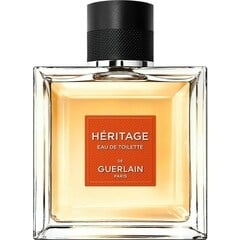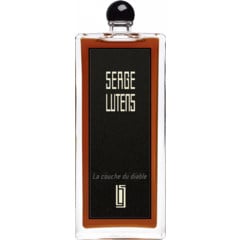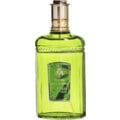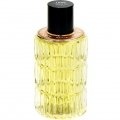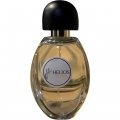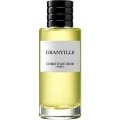
Intersport
Reviews
Filter & sort
Translated
Show original
Out of time
Héritage is one of the three fragrances, along with Égoïste and Féminité du bois, whose 1) launch I witnessed as a teenager, 2) are still in production and 3) I've been using ever since. I had Héritage for the first time in '92/'93 and it already seemed to me at that time as something completely out of time, from another decade or epoch. This consistent non-contemporaneity still impresses me. The connections to Jicky, Habit Rouge and Samsara, but also the possible influence that Héritage had on L'Instant pour l'homme a decade later, is perhaps more obvious now - just as the stiff advertising photography (man in a balloon flying through a private Louvre with a salon hanging) may not have led to the desired success - a few years later Jean-Paul Guerlain and Coriolan made a more precise timeline: 5. I still like Héritage, it is finely structured, multi-faceted in detail and incredibly comfortable, only Helmut Lang's first Eau de Cologne comes close. With its 25 or so ingredients, it is also a perfect antidote to the comprehensive thriftiness of the contents and interpretations of 'less is more'. A friend of mine commented on the fragrance a few months ago as 'Garam Masala', I was surprised if I hadn't seen the connection between herritage and subcontinental cuisine, but the image works. Aromaticity, balance, depth, attention to detail and references to an extensive history. Jean-Paul Guerlain's last great men's fragrance, absolutely top!
7 Comments
Translated
Show original
Lutens' Labdanum*
La Couche du Diable is Lutens' remarkable interpretation of Labdanum*. One might well ask why only now, fits the cistus, from which this complex fragrance, but well in the SL Beuteschema. A plant with resinous smelling, sticky leaves, and long cultural-historical meaning, up to the Pharaonenzeit; a plant that thrives on most meager soils, and defies thereby heat, like deepest temperatures at night, and most violent rain showers. The extremely resinous, dry, slightly rubbery, as aptly mentioned in the other comments, is perhaps reflected in the name. Couche can be read, in addition to all other puns, as often with Lutens, also quite simply the 'coating' or 'layer'.
The combination of dry resinousness, heat and fruitiness evokes vague memories of other Lutens': Arabie or Fille en Anguille. This association with older Lutens perfumes raises questions for me: for a good almost 30 years, Lutens has produced with Sheldrake a number of polarizing and still much discussed perfumes like no other. Perhaps it is for this reason that discussions of newer Lutens' often mention remarks like 'Lutens of old', 'old style Serge', etc. This is remarkable, a viewpoint is rarely found in discussions of other houses. At least I've never read about Guerlain of yore, or the like. And which 'earlier' is meant? There have always been changes of direction at Lutens. Starting with the many 'Bois' variations, moving on to more decently North African, Oriental cultural spaces, or distinctly French themes, such as oak, vetiver, lavender and thyme, etc. With newer perfumes like L'Innomnable, Le participe passé as well as just La Couche du Diable, I had to, with all caution with such nostalgias but then immediately think of a few Serge features, I am known to me.
La Couche presents the precursor of labdanum similar to 'Fille' pine - a staging of the resinous qualities that only come into their own in the hottest climates. All who have experienced cistroses 'in the flesh' will be quickly reminded. For all its resinousness and mention of 'Fille', La Couche du Diable is not a sweet scent. In fact, the opening is downright sour and reminds me how bergamot can be used to some extent - for example, as in Comme des Garçons 'Tar' or even Helmut Lang's 'Cuiron'. In 'La Couche', however, this acidity that takes some getting used to is intensified and shifted into a more flavorful field, more vitamin C on the tongue than anything citrusy on the nose. Once you're through that phase, where I also suspect a tinge of something immortelle-like (an ingredient used a lot lately by Lutens, though not officially), the scent evolves into one of the most beautiful labdanum drydowns I know: spices, more resinous, the aforementioned drying fruits; a certain similarity to Comme des Garçons SKAI shines through, though 'La Couche' seems more distorted and deeply layered. All in all, a very great, idiosyncratic perfume, which definitely has what it takes to stand out in a few years just as stand-alone and extraordinary, as a few of the intense 'Lutens of old'...
* it should be called Lutens' cistus: the fragrance portrays the reprocessed sections of the plant and not the labdanum extracted from it. Lutens' Labdanum, is, although more complex, Ambre Sultan.
5 Comments

 Intersport
Intersport